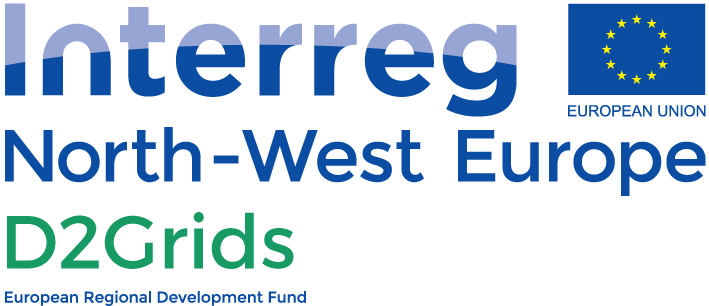Frequent Asked Questions
What are the characteristics of 5GDHC?
A 5th generation district heat and cold (5GDHC) grid is based on the exchange of thermal energy between buildings with different needs maximizing the share of low grade renewable and waste energy sources. The principal grid carries a low temperature flow to active and distributed substations which upgrade the temperature to the required level. Distributed thermal storage buffers the fluctuation in supply and demand of heat and cold. This architecture maximizes the share of low-grade renewable and waste energy sources. Find out more on 5GDHC in our dedicated section.
What are the advantages of 5GDHC?
The 5th generation of district heating and cooling (5GDHC) is a fundamentally new concept based on a decentralized network allowing direct energy flows among and within buildings, not requiring a central heat plant. Its key features are: 1) low exergy grid utilizing low temperature heat sources; 2) closed thermal energy loops ensuring hot and cold exchange among clusters of buildings; 3) integration and synergy between thermal and electricity grids. These features enable 5GDHC systems to be solely fuelled by RES.
The decentralized, low-temperature grid with shorter transportation distances reduces distribution losses to 5% compared to 25% typical for conventional heat grids.
The system allows integration of thermal & electricity grids that enables storage of surplus electrical energy generated by RES.
The concept promoted by D2Grids is demand-driven even in the early design phase, as it is configured in such a way that H&C demand and supply profiles of connected buildings are balanced as much as possible. During operation, advanced demand-side management is applied (tackling peak load and demand balancing), which ensures that the system only provides the required temperatures at the right time & place (demand adapted supply) with low grid losses.
5GDHC is the most suitable technological model for increasing the share of renewables in the H&C sector.
Moreover, 5GDHC is a very adaptable system which can be implemented at a small scale first and then be extended, according to the needs for heating and cooling.
Do 5GDHC emit less greenhouse gas than conventional district heating?
5GDHC systems drastically reduce Distribution losses, which make them more efficient than alternative systems and less energy-consuming. Moreover they can be solely fuelled by RES, reducing even more the emissions of greenhouse gas. When the D2Grids project ends, the investments made will result in 9 883 MWh/a additional capacity of RES feeding 5GDHC grids and 1 753 t CO2eq /yr reduction of GHG emissions.
Is 5GDHC more expensive than conventional DHC?
5GDHC is a new paradigm amongst district heating. As every new system, the demand is not significant enough yet to make it as cheap as alternatives. However, D2Grids project aims at industrializing the 5GDHC technological model by defining a generic technology model and product standards, increasing the adaptability and ease of replication of 5GDHC systems.
By promoting 5GDHC standards towards the industry and attracting investors, public authorities and project developers will be empowered to implement new 5GDHC investments and to modernize existing DH networks.
Through growing demand for 5GDHC, this standardized system will get less and less expensive, becoming more competitive than conventional DHC.
The D2Grids project aims at reducing by 20% the initial investment required, on the long term.
Must a district heating provide both cooling and heating to be 5G?
One of 5GDHC’s core principle is the ability to simultaneously deliver heating and cooling services at different temperatures to different customers and to exchange demands for heat and cold among customers, thereby creating a new way to collectively reduce the needs for thermal energy. Heat pumps always create both heat and cold, the one is delivered locally, the other is returned to the grid.
Where has 5GDHC been implemented already?
Find all the details of the 5 pilot sites from the D2Grids project on our dedicated section.
How can I know if a city/district is suitable for a 5GDHC?
Use our open-access tool to fill in information on your city/district to find out if it is suitable for a 5GDHC.
Can an existing DHC be improved to become 5G?
An existing DHC can totally be turned into a 5GDHC. Some of the D2Grids pilot sites did. Find out more on them (link to pilot site section). Use our open-access tool to fill in information on your existing district heating to find out if it is can be upgraded into a 5GDHC.
What types of buildings can be heated or cooled by 5GDHC?
5GDHC are ideal for low temperature heating (below 65°C). All buildings which have emitters adapted to low temperature can be heated by 5GDHC.
My facility generates waste heat, could I supply that to a 5GDHC network?
5GDHC is based on the exchange of thermal energy between buildings. So it needs buildings that generate heating or cooling.
Is 5GDHC more innovative than conventional DHC?
5GDHC is a new paradigm amongst district heating and cooling: the low temperature enables multiple producers to inject heating or cooling in the district and buildings to exchange thermal energy, therefore becoming prosumers; 5GDHC also integrates the coupling of thermal and electricity grids and can experiment photovoltaic electricty self-consumption and storage.
What is D2Grids?
D2Grids is a 3 year program financed by Interreg NWE which objective is to increase the share of RES used for heating & cooling to 20% in North West Europe 10 years after the project ends, through accelerating the roll-out of 5GDCH systems. Uptake will be accelerated by :
- Industrialisation of the system through developing a generic technology model and product standards;
- Boosting commercialization potential of 5GDHC systems through presenting solid business plans and attracting investors;
- Demonstrating the technology through impactful pilot investments in Bochum, Brunssum, Glasgow, Nottingham, and Paris-Saclay.
Find out more about the D2Grids project on the dedicated section.
